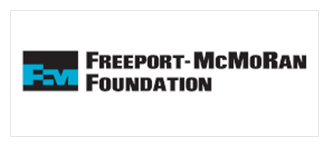In 2017, the percentage of housing cost-burdened households varied widely among Southern Arizona communities, ranging from a low of 16.1% to a high of 48.7%. This article provides an in-depth look at how 38 of the largest cities, towns, and census designated places (CDP) within Southern Arizona fare in the percentage of households that are housing cost-burdened. Due to the importance of mining in Greenlee County, we also include three nearby communities in New Mexico. Hereafter, when discussing multiple cities, towns, or census designated places, the general term communities will be used. Note that, in some instances, we do not present data because the estimates were not sufficiently precise for that community.
Housing cost burden is an important measure of a household’s well-being. Cost-burdened households are more likely to struggle to pay for basic needs such as healthcare, childcare, transportation, and even food. A household is considered to have a housing cost burden when they pay more than 30% of their income in household expenditures such as: rent or a mortgage, taxes, and utilities. In 2017, the Corona de Tucson CDP posted the lowest percentage of households that were housing cost-burdened at 16.1%. The town of Thatcher and the Green Valley CDP had low rates as well at 21.2% and 23.0%, respectively. The Corona de Tucson CDP’s residents fared significantly better than the nation and state of Arizona, which posted rates of 33.1% and 32.2% respectively. Conversely, the city of South Tucson posted the highest percentage of cost-burdened households with a rate of 48.7%, 16.5 percentage points higher than the state and more than three times Corona de Tucson’s rate. Figure 1 examines the percentage of housing cost-burdened households in the communities.
Figure 1: Percent of Housing Cost-Burdened Households (2017)
[[nid:24036]]
In 2017, renters fared significantly worse than homeowners, with 14 of the 41 communities posting housing cost-burden rates for renters in excess of 50.0%. On the other hand, on average, 22.4% of homeowners within the 41 communities were housing cost-burdened. The Corona de Tucson CDP posted the least number of homeowners that were housing cost-burdened at 15.3%, while the city of Somerton had the most at 36.1%. The U.S., state of Arizona, and city of Tucson all had similar housing cost-burden rates for homeowners in the 23.1-25.0% range. For renters, there was slightly more variation between the U.S., state of Arizona, and city of Tucson with respective rates of 50.6%, 48.9%, and 55.8%. Renters in the Ajo CDP fared the worst among all communities, with a housing cost-burden rate of 61.8%. In contrast, the town of Clifton posted the lowest percentage of renters that were housing cost- burdened at 10.5%.
Homeowners can be broken down into those that have a mortgage and those that do not. Homeowners without a mortgage tend to be significantly less cost-burdened than homeowners with a mortgage. For instance, homeowners without a mortgage that are housing cost-burdened pay more than 30% of their income in homeowner costs such as: taxes, insurance, and utilities. In the city of Tucson, 31.9% of homeowners with a mortgage were housing cost-burdened, while that percentage dropped to 12.4% for homeowners without a mortgage in 2017. Figure 2 illustrates housing cost burden by tenure.
Figure 2: Percent of Housing Cost-Burdened Households by Tenure (2017)
[[nid:24101]]
The age groups of 25 to 34 years and 35 to 64 years had similar housing cost-burden percentages for the U.S. and state of Arizona in 2017, but varied greatly among the communities. For example, the town of Marana posted a rate of 11.8% for ages 25 to 34, but a rate of 20.1% for ages 35 to 64, a difference of 8.3 percentage points. On the other hand, the town of Oro Valley had a rate of 27.1% for householders age 25 to 34, but only 14.9% of householders age 35 to 64 were housing cost-burdened. This variation was also evident in the 65 and over age group. In some cases, such as the cities of Tucson and Somerton, the rate was less for householders age 65 and over. In other cases, the housing cost-burden rate was much higher for those age 65 and over than for the other age groups. For example, the Vail CDP had the highest housing cost-burden rate in the 65 years and over age group, at 43.5%; however, this rate was only 13.2% for the 35 to 64 age group. Figure 3 displays percentage of housing cost-burdened households by age for all 41 communities.
Figure 3: Percent of Housing Cost-Burdened Households by Age (2017)
[[nid:24234]]
The percentage of households that are housing cost-burdened increases for those with lower incomes regardless if they own or rent. As one would expect, the rate of households considered housing cost-burdened decreases as income increases. For instance, 19.8% of total households with income less than $20,000 were housing cost-burdened in the city of Tucson in 2017. This rate decreased to 11.8% for households with income $20,000 to $34,999, to 4.7% for those with income $35,000 to $49,999, to 1.9% for the income range $50,000 to $74,999, and to 0.5% for households with income greater than $75,000. When compared to the U.S., households in the city of Tucson are more likely to be considered housing cost-burdened at lower levels of income. For example, households earning less than $20,000 in the city of Tucson had a housing cost-burden rate of 19.8% compared to only 8.6% for those nationally, more than a 10 percentage point difference. Approximately half of the communities explored in this article displayed similar results, with the lower income ranges posting a higher percentage of households that were housing cost-burdened relative to the U.S.
For the majority of the communities, renters were significantly more housing cost-burdened when compared to homeowners in all but the two highest income ranges. For example, the Casas Adobes CDP had a housing cost-burden rate of 4.8% for homeowners in the $50,000 to $74,999 income range, but, for renters, this rate was 2.5%. This was also the case for those with income greater than $75,000, with a housing cost-burden rate of 1.3% for homeowners, but 0.7% for renters. This can be observed in the state and national data as well, with renters in the highest income brackets being less housing cost-burdened than homeowners of the same income range. Figure 4a-c includes three graphs and illustrates housing cost burden by household income, broken down by tenure.
Figure 4a-c: Percent of Housing Cost-Burdened Households by Income
Since 2000, there has been an uptick in the percentage of households that are housing cost- burdened. This can be seen in most of the communities explored in this article. The Vail CDP was the only community to post a decrease in the percentage of housing cost-burdened renters from 2000 to 2017, down to 36.5% in 2017 from 51.2% in 2000. As for homeowners, there were only 13 communities that posted lower housing cost-burden rates for homeowners in 2017 than in 2000. The Corona de Tucson CDP posted the largest decrease, with 23.4% in 2000 and 15.3% in 2017. When considering all households (homeowners and renters combined), only six of the 41 communities had lower housing cost-burden rates in 2017 than in 2000. The remaining communities posted an average increase in the housing cost-burden rate of 5.1 percentage points. Figure 5 includes three trend graphs that highlight how the percentage of housing cost-burdened households have changed over time for renters, homeowners, and renters and homeowners combined.
Figure 5a-c: Percent of Housing Cost-Burdened Households Trend (2017)
To learn more about the housing cost burden for the Arizona counties, metropolitan areas, states, and the U.S. please visit the Housing Cost Burden indicator. Detailed information on housing cost burden by trend, tenure, age, and income is available. The estimates provided in this article were obtained from the U.S. Census Bureau, American Community Survey (ACS). The ACS is a nationwide rolling sample survey that produces one-year and five-year estimates. All data provided in this report utilize five-year estimates. This article provides information on the 38 largest cities, towns, and census designated places (CDP) within the Southern Arizona counties of Cochise, Pima, Pinal, Greenlee, Graham, Santa Cruz, and Yuma. Additionally, three nearby communities in New Mexico are included.












